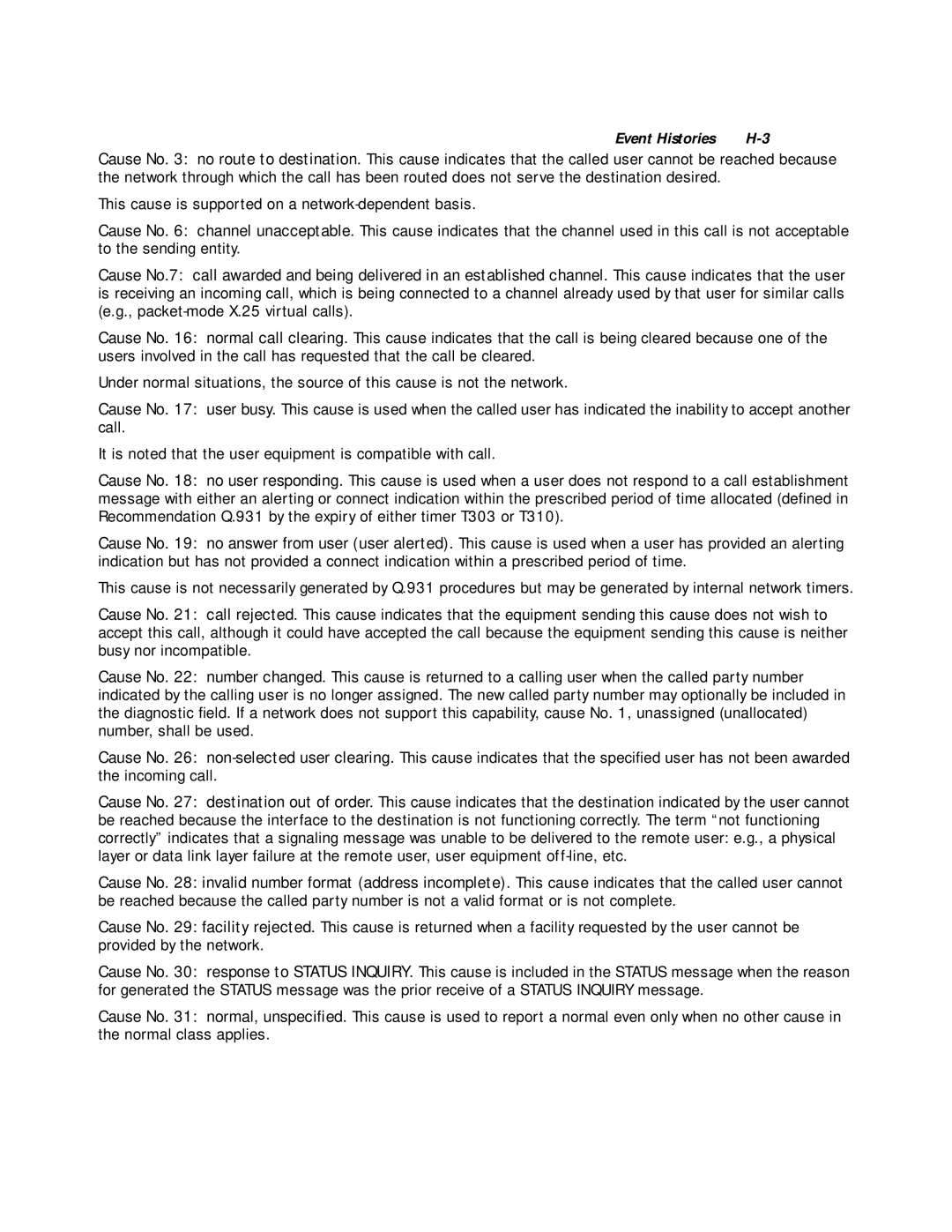Event Histories |
Cause No. 3: no route to destination. This cause indicates that the called user cannot be reached because the network through which the call has been routed does not serve the destination desired.
This cause is supported on a
Cause No. 6: channel unacceptable. This cause indicates that the channel used in this call is not acceptable to the sending entity.
Cause No.7: call awarded and being delivered in an established channel. This cause indicates that the user is receiving an incoming call, which is being connected to a channel already used by that user for similar calls (e.g.,
Cause No. 16: normal call clearing. This cause indicates that the call is being cleared because one of the users involved in the call has requested that the call be cleared.
Under normal situations, the source of this cause is not the network.
Cause No. 17: user busy. This cause is used when the called user has indicated the inability to accept another call.
It is noted that the user equipment is compatible with call.
Cause No. 18: no user responding. This cause is used when a user does not respond to a call establishment message with either an alerting or connect indication within the prescribed period of time allocated (defined in Recommendation Q.931 by the expiry of either timer T303 or T310).
Cause No. 19: no answer from user (user alerted). This cause is used when a user has provided an alerting indication but has not provided a connect indication within a prescribed period of time.
This cause is not necessarily generated by Q.931 procedures but may be generated by internal network timers.
Cause No. 21: call rejected. This cause indicates that the equipment sending this cause does not wish to accept this call, although it could have accepted the call because the equipment sending this cause is neither busy nor incompatible.
Cause No. 22: number changed. This cause is returned to a calling user when the called party number indicated by the calling user is no longer assigned. The new called party number may optionally be included in the diagnostic field. If a network does not support this capability, cause No. 1, unassigned (unallocated) number, shall be used.
Cause No. 26:
Cause No. 27: destination out of order. This cause indicates that the destination indicated by the user cannot be reached because the interface to the destination is not functioning correctly. The term “not functioning correctly” indicates that a signaling message was unable to be delivered to the remote user: e.g., a physical layer or data link layer failure at the remote user, user equipment
Cause No. 28: invalid number format (address incomplete). This cause indicates that the called user cannot be reached because the called party number is not a valid format or is not complete.
Cause No. 29: facility rejected. This cause is returned when a facility requested by the user cannot be provided by the network.
Cause No. 30: response to STATUS INQUIRY. This cause is included in the STATUS message when the reason for generated the STATUS message was the prior receive of a STATUS INQUIRY message.
Cause No. 31: normal, unspecified. This cause is used to report a normal even only when no other cause in the normal class applies.
